
Hoosier National Forest: Indiana's Natural Gem
Explore Hoosier National Forest in Indiana, where diverse landscapes, rich history, and numerous outdoor activities await nature lovers and adventurers alike.
Hoosier National Forest, located in the heart of southern Indiana, is a treasure trove for nature lovers and outdoor enthusiasts. Spanning over 200,000 acres, this forest offers a diverse landscape ranging from rolling hills and rugged terrains to serene lakes and lush woodlands. It's an ideal location for hiking, camping, fishing, and wildlife spotting. The forest is divided into four distinct areas, each with its own unique attractions. The Charles C. Deam Wilderness is a favorite among hikers and backpackers, boasting over 37 miles of trails. The Hemlock Cliffs area is known for its stunning geological formations and waterfalls, providing a picturesque backdrop for any adventure. Patoka Lake is perfect for water activities and fishing, while the German Ridge area offers excellent opportunities for horseback riding and mountain biking. Hoosier National Forest is not only rich in natural beauty but also steeped in history. Visitors can explore remnants of past settlements and historic sites that tell the story of the region's cultural heritage. Whether you're seeking a peaceful retreat or an action-packed outdoor experience, Hoosier National Forest caters to all types of adventurers.
Local tips in Hoosier National Forest
- Visit in the fall to witness the stunning autumn foliage.
- Check weather and trail conditions before heading out, especially in winter.
- Carry insect repellent during the summer months.
- Make sure to have a map; cell service can be spotty in some areas.
- Camping permits are required in some areas; check in advance.
Hoosier National Forest: Indiana's Natural Gem
Hoosier National Forest, located in the heart of southern Indiana, is a treasure trove for nature lovers and outdoor enthusiasts. Spanning over 200,000 acres, this forest offers a diverse landscape ranging from rolling hills and rugged terrains to serene lakes and lush woodlands. It's an ideal location for hiking, camping, fishing, and wildlife spotting. The forest is divided into four distinct areas, each with its own unique attractions. The Charles C. Deam Wilderness is a favorite among hikers and backpackers, boasting over 37 miles of trails. The Hemlock Cliffs area is known for its stunning geological formations and waterfalls, providing a picturesque backdrop for any adventure. Patoka Lake is perfect for water activities and fishing, while the German Ridge area offers excellent opportunities for horseback riding and mountain biking. Hoosier National Forest is not only rich in natural beauty but also steeped in history. Visitors can explore remnants of past settlements and historic sites that tell the story of the region's cultural heritage. Whether you're seeking a peaceful retreat or an action-packed outdoor experience, Hoosier National Forest caters to all types of adventurers.
When is the best time to go to Hoosier National Forest?
Iconic landmarks you can’t miss
Falls of the Ohio State Park
Experience the unique geological wonders and outdoor adventures at Falls of the Ohio State Park, a hidden gem in Indiana's natural landscape.

Indiana Caverns
Explore the enchanting underground world of Indiana Caverns, a geological wonder filled with adventure, history, and breathtaking natural beauty.

Marengo Cave U.S. National Landmark
Discover the breathtaking underground world of Marengo Cave, a U.S. National Landmark offering stunning geological formations and outdoor adventures.

George Rogers Clark National Historical Park
Explore the rich history of the American Revolution at George Rogers Clark National Historical Park, a serene and educational destination in Vincennes, Indiana.

Bluespring Caverns Park
Explore the stunning underground beauty of Bluespring Caverns Park, Indiana's premier destination for cave adventures and nature exploration.

Lincoln Boyhood National Memorial
Explore the Lincoln Boyhood National Memorial, a serene park celebrating the early life of Abraham Lincoln through nature trails, exhibits, and historical insights.

Hemlock Cliffs
Discover the breathtaking beauty of Hemlock Cliffs, a top hiking destination in Indiana's Hoosier National Forest, perfect for outdoor enthusiasts.

French Lick Scenic Railway
Discover the enchanting ride of the French Lick Scenic Railway, where history meets breathtaking landscapes in Indiana's picturesque countryside.

Sample Gates
Discover the iconic Sample Gates, a historical landmark and gateway to Indiana University, in the heart of Bloomington, Indiana.

Harrison-Crawford State Forest
Explore the breathtaking landscapes and outdoor adventures at Harrison-Crawford State Forest, a hidden gem in Indiana for nature enthusiasts.

Hickory Ridge Lookout Tower
Discover breathtaking views at Hickory Ridge Lookout Tower, a hidden gem in the Hoosier National Forest, perfect for nature lovers and adventurers.

Culbertson Mansion State Historic Site
Explore the Culbertson Mansion State Historic Site, a historic museum in New Albany showcasing Victorian architecture and Indiana's rich heritage.

Martin State Forest
Explore the stunning landscapes and tranquil trails of Martin State Forest in Indiana, perfect for outdoor adventures and peaceful getaways.

Twin Caves
Explore Twin Caves, Indiana: A breathtaking historical landmark with stunning geological formations and rich natural diversity.

Nine Penny Branch State Nature Preserve
Explore the serene beauty of Nine Penny Branch State Nature Preserve, a must-visit destination for nature lovers in Indiana.

Unmissable attractions to see
Brown County State Park
Explore the scenic trails, vibrant wildlife, and breathtaking views of Brown County State Park, Indiana’s natural gem for outdoor enthusiasts.

Falls of the Ohio State Park
Explore the breathtaking Falls of the Ohio State Park, a natural wonder filled with fossils, scenic trails, and vibrant wildlife along the Ohio River.

French Lick Casino
Discover the allure of gaming and entertainment at French Lick Casino, a top tourist attraction in Indiana with stunning views and luxurious amenities.
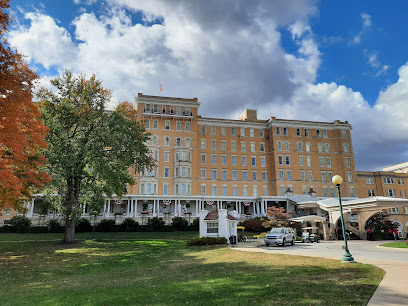
Mounds State Park
Explore the historic Mounds State Park in Anderson, Indiana, where ancient earthworks and scenic landscapes create a perfect outdoor escape.

Prophetstown State Park
Experience the stunning landscapes and rich history of Prophetstown State Park, a perfect getaway for nature lovers and families alike.

Shakamak State Park
Explore the natural beauty and outdoor adventures of Shakamak State Park, a serene retreat in Indiana perfect for all nature enthusiasts.

Whitewater Memorial State Park
Explore Whitewater Memorial State Park: a serene destination for outdoor activities, scenic hikes, and family-friendly fun in Indiana's natural beauty.

Wilstem
Experience the beauty of wildlife and nature at Wilstem in Indiana, where adventure awaits with horseback riding and animal encounters.

Yellowwood State Forest
Explore the serene landscapes, diverse wildlife, and recreational activities at Yellowwood State Forest in Indiana, a perfect escape into nature.

O'Bannon Woods State Park
Explore the breathtaking landscapes and diverse activities at O'Bannon Woods State Park in Indiana, perfect for outdoor adventures and family fun.

Thistlethwaite Falls
Experience the serene beauty of Thistlethwaite Falls, a natural oasis in Richmond, Indiana, perfect for relaxation and outdoor adventures.

Hall of Heroes Superhero Museum
Explore the Hall of Heroes Superhero Museum in Elkhart, Indiana, and dive into the thrilling world of comic book history and superhero culture.
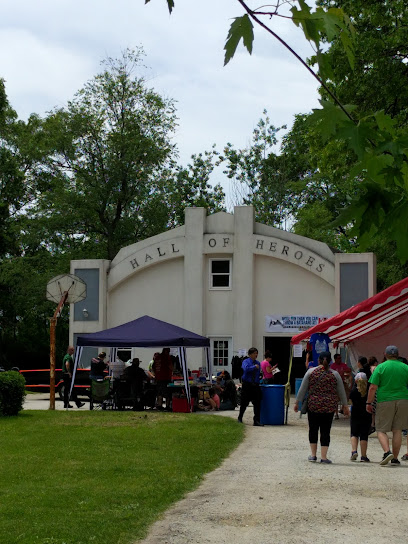
Harrison-Crawford State Forest
Explore the breathtaking beauty of Harrison-Crawford State Forest, a tranquil retreat offering outdoor adventures and stunning natural scenery in Indiana.
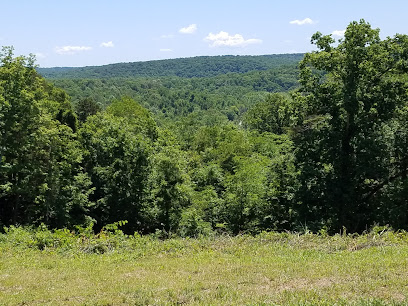
Hickory Ridge Lookout Tower
Discover the stunning views and serene atmosphere at Hickory Ridge Lookout Tower, Indiana's hidden gem in the Hoosier National Forest.

French Lick Winery
Experience the beauty of Indiana at French Lick Winery, where fine wines and stunning views create an unforgettable getaway for tourists.

Essential places to dine
The Overlook Restaurant
Experience delicious family-friendly dining with stunning views at The Overlook Restaurant in Leavenworth, Indiana.

Stoll's Lakeview Restaurant
Experience exquisite buffet dining at Stoll's Lakeview Restaurant in Loogootee, Indiana—where delicious food meets breathtaking lakeside views.

33 Brick Street
Discover the flavors of Indiana at 33 Brick Street—a culinary haven in French Lick offering delicious dishes made from fresh local ingredients.

Schwartz Family Restaurant
Discover delicious comfort food at Schwartz Family Restaurant in Eckerty – where hearty buffets meet friendly service.

Porkys BBQ of Paoli
Experience authentic southern barbecue at Porky's BBQ in Paoli - where smoky flavors meet friendly service.
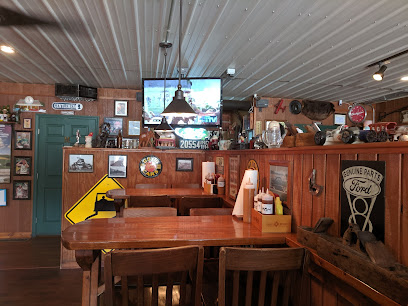
ʻOhana Hawaiian Grill & Bar
Discover authentic Hawaiian flavors at ʻOhana Hawaiian Grill & Bar in French Lick - where every meal is infused with Aloha spirit.

German Café
Experience authentic German cuisine at the German Café in French Lick – perfect for families and food lovers seeking delicious meals.

Miguel's Mexican Restaurant
Experience authentic Mexican cuisine at Miguel's Mexican Restaurant in West Baden Springs—where every dish tells a story of tradition and flavor.

Legendz Sports Bar and Grill
Experience great food and live sports at Legendz Sports Bar and Grill in French Lick - where every meal is a game day celebration!

Van's Country Table
Experience heartwarming home-cooked meals at Van's Country Table in Marengo – where family-friendly dining meets local charm.

Nila's Place
Experience delightful breakfasts at Nila's Place in West Baden Springs – where every bite feels like home.

Roosters Hen House LLC
Experience delightful breakfasts at Roosters Hen House LLC in Hardinsburg, Indiana - where every meal is a celebration of American flavors.

El Compadre Mexican Restaurant
Savor authentic Mexican flavors at El Compadre Mexican Restaurant in West Baden Springs - where every meal is a fiesta.

Power Plant Bar & Grill
Experience delightful dining at Power Plant Bar & Grill in French Lick—where great food meets local charm!

Marcy's Kitchen
Experience hearty homemade meals at Marcy's Kitchen in English, Indiana - where comfort food meets friendly service at budget-friendly prices.

Markets, malls and hidden boutiques
Clarksville Peddlers Mall
Explore Clarksville Peddlers Mall, Indiana's premier destination for unique antiques and collectibles, where every corner reveals a new treasure.

Jasper Manor
Explore Jasper Manor in Jasper, Indiana - A vibrant shopping mall offering diverse retail experiences and a welcoming atmosphere for tourists.

Saint Meinrad Books & Gifts
Explore the unique offerings of Saint Meinrad Books & Gifts, where local charm meets spiritual inspiration in a serene shopping experience.

The Indiana Shop - 3rd Street (Formerly TIS)
Explore The Indiana Shop for unique gifts, apparel, and sports memorabilia that celebrate Indiana culture and make your trip unforgettable.

Chocolate Bliss & Kitchen Essentials
Discover a delightful haven of chocolates, candies, and kitchen essentials in Jasper, Indiana, at Chocolate Bliss & Kitchen Essentials.

The Great Outdoors of Indiana, Inc.
Discover the ultimate destination for sporting goods, archery, fishing, and hunting in Jasper, Indiana's great outdoors.

Bear Hollow Wood Carvers
Explore Bear Hollow Wood Carvers, where artistry meets craftsmanship in the heart of French Lick, Indiana, showcasing unique wooden sculptures and art.

Regeneration Thrift Store
Explore Regeneration Thrift Store for unique second-hand treasures and antiques in the heart of Mitchell, Indiana.

Best Treasures
Explore Best Treasures in Paoli, Indiana for unique items and local crafts that capture the essence of this charming town.

The Odd Shop
Discover unique antiques, thrifted goods, and vintage clothing at The Odd Shop in New Albany, Indiana—where nostalgia meets eclectic charm.

Just A Trace
Discover the enchanting world of toys at Just A Trace in Jasper, Indiana, where imagination meets creativity for children of all ages.

The Bra Market
Experience elegance at The Bra Market in Jasper, Indiana - the premier destination for stylish women's lingerie and clothing.

Regalo
Explore Regalo in New Albany for unique gifts, artisanal clothing, and local art that capture the heart of Indiana's creativity.

The Indiana Shop - Kirkwood Ave
Explore The Indiana Shop in Bloomington for unique souvenirs, stylish apparel, and local memorabilia that capture the essence of Indiana.

National Trail Antique Mall
Explore a charming antique store in Lewisville, Indiana, filled with vintage treasures and unique collectibles for every enthusiast.
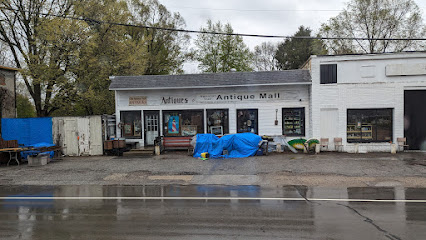
Essential bars & hidden hideouts
Bubba's 33
Experience the vibrant flavors of American comfort food at Bubba's 33, a top choice for food and sports lovers in Clarksville, Indiana.

ʻOhana Hawaiian Grill & Bar
Savor the authentic taste of Hawaiian cuisine in French Lick at ʻOhana Hawaiian Grill & Bar, where every meal is a celebration of flavor.

Upland Jeffersonville
Discover the vibrant ambiance and exceptional craft beer at Upland Jeffersonville, the ultimate brewpub experience by the riverside.

Legendz Sports Bar and Grill
Delicious food, live sports, and a vibrant atmosphere await you at Legendz Sports Bar and Grill in French Lick, Indiana.

Crazy Horse
Discover the essence of American flavors at Crazy Horse, Bloomington's favorite dining destination offering a vibrant atmosphere and a diverse menu.

Dorman Street
Experience the vibrant nightlife of Indianapolis at Dorman Street, where great drinks and live music promise an unforgettable evening.
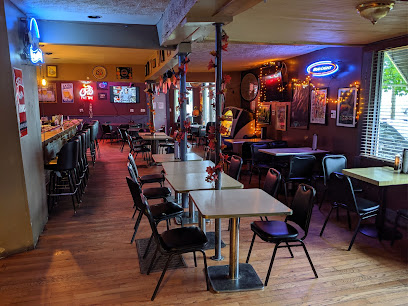
Melody Inn
Discover the lively atmosphere of Melody Inn, a top bar in Indianapolis known for its live music, craft drinks, and welcoming community vibe.

Power Plant Bar & Grill
Experience the vibrant atmosphere and delicious grilled dishes at Power Plant Bar & Grill in French Lick, Indiana, perfect for family and friends.

Harry's Taphouse & Kitchen
Experience the vibrant culinary scene at Harry's Taphouse & Kitchen, where local flavors meet a lively atmosphere in Jeffersonville, Indiana.

Kelley's Restaurant & Bar LLC
Savor grilled delights at Kelley's Restaurant & Bar, where every meal is a celebration of flavor and community in Celestine, Indiana.

PRIDE bar + lounge
Discover the lively and inclusive PRIDE Bar + Lounge in New Albany, the perfect spot for great drinks and unforgettable nights out.

Lit Cigar Bar and Lounge
Discover the sophisticated ambiance of Lit Cigar Bar and Lounge in New Albany, where premium cigars and crafted cocktails await.

JR's Bar
Experience the vibrant nightlife of Jasper at JR's Bar, where friendly faces and refreshing drinks await every visitor.

Hitching Post Tavern
Experience the local bar scene at Hitching Post Tavern, where great drinks and a lively atmosphere await in historic New Albany.
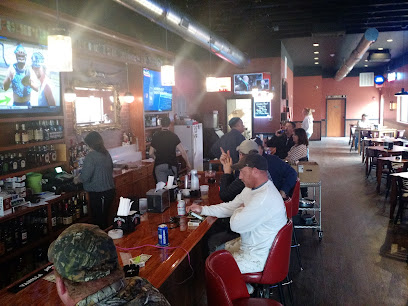
Hogs Tavern
Experience the heart of Lanesville at Hogs Tavern, where locals gather for great drinks, friendly faces, and vibrant events in a cozy atmosphere.

Local Phrases about Hoosier National Forest
-
- HelloHowdy
[haw-dee] - GoodbyeSee ya later
[see yuh lay-tur] - YesYup
[yuhp] - NoNah
[nah] - Please/You're welcomePlease
[pleez] - Thank youMuch obliged
[muhch uh-blahy-jed] - Excuse me/SorryPardon me
[pahr-dn mee] - How are you?Howdy
[haw-dee] - Fine. And you?Just dandy. And yerself?
[juhst dan-dee. And yer-self?] - Do you speak English?Y'all speak English?
[yawl speek ing-glish?] - I don't understandI'm plum confused
[ahm pluhm kun-fyoozd]
- HelloHowdy
-
- I'd like to see the menu, pleaseCan I take a gander at the grub list, please
[kan eye teyk uh gan-dur at thee gruhb list pleez] - I don't eat meatI ain't a meat eater
[ah ai-nt uh meet ee-ter] - Cheers!Bottoms up!
[bot-uhmz up] - I would like to pay, pleaseI reckon I'll settle up now, if ya don't mind
[ah rek-uhn a-eel set-ul up now if yuh dohnt mynd]
- I'd like to see the menu, pleaseCan I take a gander at the grub list, please
-
- Help!SOS!
[ess-oh-ess] - Go away!Git!
[git] - Call the Police!Ring up the law!
[ring up thee law] - Call a doctor!Fetch a doc!
[fetch uh dahk] - I'm lostI'm turned around
[ahm turnd uh-round] - I'm illI ain't feelin' too good
[ah ai-nt fee-lin too good]
- Help!SOS!
-
- I'd like to buy...I'm fixin' to purchase...
[ahm fiks-in tuh pur-chus] - I'm just lookingI'm browsin'
[ahm brow-sin] - How much is it?What's the damage?
[wuts thee dam-ij] - That's too expensiveThat's a bit steep
[thats uh bit steep] - Can you lower the price?Can ya knock a few bucks off?
[kan yuh nok uh fyoo buhks awf]
- I'd like to buy...I'm fixin' to purchase...
-
- What time is it?What's the hour?
[wuts thee ow-er] - It's one o'clockIt's high noon
[its hi noon] - Half past (10)Halfway to (10)
[haf-way tuh ten] - MorningMornin'
[morn-in] - AfternoonAfternoon
[af-ter-noon] - EveningEvenin'
[ee-ven-in] - YesterdayYest'day
[yest-dey] - TodayToday
[tuh-day] - TomorrowTomorrer
[tuh-mor-er] - 1One
[wun] - 2Two
[too] - 3Three
[three] - 4Four
[for] - 5Five
[fahyv] - 6Six
[siks] - 7Seven
[sev-uhn] - 8Eight
[ayt] - 9Nine
[nine] - 10Ten
[ten]
- What time is it?What's the hour?
-
- Where's a/the...?Where's the...
[wheres thee] - What's the address?What's the street?
[wuts thee street] - Can you show me (on the map)?Can ya point it out (on the map)?
[kan yuh point it out awn thee map] - When's the next (bus)?When's the next one (bus)?
[whens thee nekst wun bus] - A ticket (to ....)A pass (to ....)
[uh pass tuh]
- Where's a/the...?Where's the...
History of Hoosier National Forest
-
The Hoosier National Forest area was first inhabited by indigenous peoples thousands of years ago. Archaeological evidence suggests that Native American tribes such as the Shawnee, Miami, and Illiniwek lived in the region. These groups utilized the area's rich natural resources for hunting, fishing, and gathering.
-
The first European settlers arrived in the early 19th century, drawn by the fertile land and abundant timber. The establishment of small farming communities began to shape the landscape. These early settlers often faced challenges from the dense forests and rugged terrain.
-
During the Civil War, the region now known as Hoosier National Forest was a site of strategic importance due to its location and resources. Local militias and volunteer regiments were formed to support the Union cause. The forest provided materials such as timber for building and fuel.
-
Hoosier National Forest was officially established in 1935 under the guidance of the U.S. Forest Service. The goal was to restore and manage the land, which had been heavily deforested and degraded due to over-logging and poor agricultural practices. The Civilian Conservation Corps played a significant role in reforesting and developing the area.
-
During World War II, the forest served as a source of timber for military needs. Additionally, parts of the forest were used for training by the military, and some areas were designated for war production efforts. The war period brought both increased activity and conservation challenges to the forest.
-
Hoosier National Forest holds cultural significance for various communities, including the descendants of early settlers and Native American tribes. The forest is home to numerous historical sites, including old homesteads, cemeteries, and remnants of past settlements, offering a glimpse into the region's rich history.
-
In recent decades, Hoosier National Forest has become a focal point for conservation and recreational activities. Efforts to protect the forest's biodiversity and promote sustainable use have been ongoing. The forest now offers a wide range of recreational opportunities, from hiking and camping to wildlife observation, drawing visitors from across the nation.
Hoosier National Forest Essentials
-
Hoosier National Forest is located in southern Indiana, and the nearest major airport is Indianapolis International Airport, approximately 90 miles north of the forest. From the airport, you can rent a car to drive to the forest. The drive takes about 2 hours via Interstate 65 and State Road 46. Alternatively, you can take a bus to nearby towns such as Bloomington or Bedford, and then use local transportation options to reach the forest.
-
The most convenient way to explore Hoosier National Forest is by car, as many of the attractions are spread out and public transportation options within the forest are limited. Car rentals are available at Indianapolis International Airport and in nearby towns. For those who prefer not to drive, local taxi services and rideshare apps like Uber and Lyft can be used to get to trailheads and other points of interest.
-
The official currency in the United States is the US Dollar (USD). Credit and debit cards are widely accepted in most shops, restaurants, and gas stations around the Hoosier National Forest. However, it is advisable to carry some cash for entrance fees, smaller establishments, and situations where card payments are not accepted. ATMs are available in nearby towns such as Bloomington and Bedford.
-
Hoosier National Forest is generally a safe destination for tourists. However, it is important to take standard precautions. Avoid leaving valuables in your car when unattended, and always lock your vehicle. Be aware of your surroundings, especially when hiking or camping, and follow posted guidelines to avoid encounters with wildlife. The forest itself does not have high-crime areas, but it is always best to stay vigilant.
-
In case of emergency, dial 911 for immediate assistance. There are several ranger stations and visitor centers throughout Hoosier National Forest where you can get help and information. It is recommended to have travel insurance that covers medical emergencies. For minor health issues, carry a basic first aid kit and know the location of the nearest medical facilities in nearby towns like Bloomington or Bedford.
-
Fashion: Do wear comfortable, weather-appropriate clothing and sturdy hiking boots. Don’t wear flip-flops or open-toed shoes on trails. Religion: Do respect local customs and any religious sites you may visit. Don’t disturb any religious ceremonies or gatherings. Public Transport: Do use local buses or shuttles where available, but be prepared for limited service. Don’t rely solely on public transport for getting around the forest. Greetings: Do greet fellow hikers and campers with a friendly nod or wave. Don’t intrude on others' campsites without permission. Eating & Drinking: Do pack out all trash and leave no trace. Don’t feed wildlife or leave food unattended.
-
To experience Hoosier National Forest like a local, visit during the fall to enjoy the beautiful autumn foliage. Explore less crowded trails such as the Sycamore Loop or Charles C. Deam Wilderness area. Participate in ranger-led programs to learn more about the local flora, fauna, and history. Stop by local farmers' markets in nearby towns for fresh produce and local crafts. Don’t miss out on local eateries and diners in towns like Nashville and Bloomington for a taste of regional cuisine.
Trending Landmarks in Hoosier National Forest
-
Falls of the Ohio State Park
-
Indiana Caverns
-
Marengo Cave U.S. National Landmark
-
George Rogers Clark National Historical Park
-
Bluespring Caverns Park
-
Lincoln Boyhood National Memorial
-
Hemlock Cliffs
-
French Lick Scenic Railway
-
Sample Gates
-
Harrison-Crawford State Forest
-
Hickory Ridge Lookout Tower
-
Culbertson Mansion State Historic Site
-
Martin State Forest
-
Twin Caves
-
Nine Penny Branch State Nature Preserve
Nearby Cities to Hoosier National Forest
-
Things To Do in Louisville
-
Things To Do in Owensboro
-
Things To Do in Elizabethtown
-
Things To Do in Evansville
-
Things To Do in Bardstown
-
Things To Do in Terre Haute
-
Things To Do in Frankfort
-
Things To Do in Indianapolis
-
Things To Do in Fishers
-
Things To Do in Carmel
-
Things To Do in Lexington
-
Things To Do in Covington
-
Things To Do in Cincinnati
-
Things To Do in Fort Thomas
-
Things To Do in Mason






